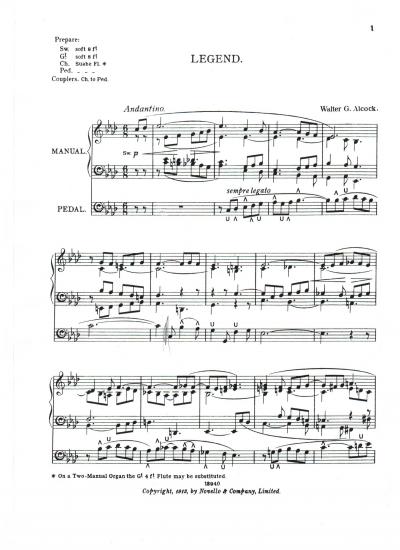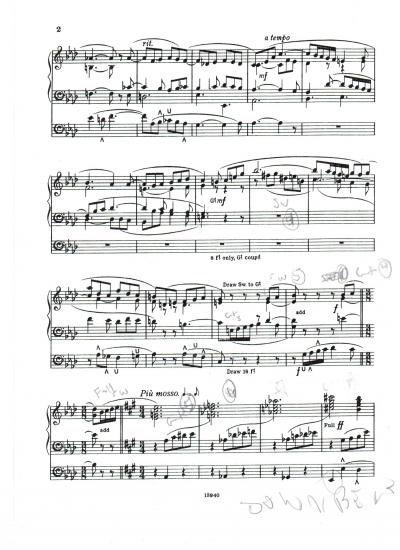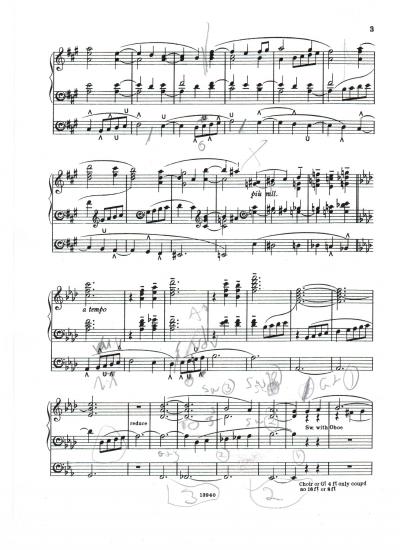

Specific advice on playing an English cathedral work without the use of General Pistons - a COMPLETE How-to-Do!
2015-10-08 - Playing and PiecesEditor's note: This article is a follow up to David's wonderful article "The Anglican Way of Setting Up and Using Pistons".
The art of making swift changes in registration while playing seems to be largely the art of the English organists. From the time of W. T. Best, E. H. Lemare, and others, these gentleman were the first to have "orchestrated" the music of the organ. This probably stems from the needs, technical skills and mastery required to make choral accompaniments come to life at hundreds of sung services each year. Nobody is better than the English when it comes to this!
While it's probably not a good thing to make "real" organ music sound "orchestral", it's a must if you're accompanying something like a movement from the Brahms Requiem on the organ. While you may want a clear and precise plenum for you Bach, you can't pull out the principals and bang through a "transcription" like the Brahms, and say to yourself - "Good job!"
So, how do they do it? Is it a trick? Is it an illusion? Can I play like this?
The answer to these questions are not easy ones!
How do they do it? Days, weeks, months, years, a lifetime of DOING IT is the ONLY answer to this!
Is it a trick? Maybe, in a way. Still, there has to be a very solid technique and creative imagination behind it all.
Is it an illusion? To a degree. After all, we KNOW something like the Brahms accompaniment isn't REALLY being played by an orchestra, but it satisfies us "like" it was.
Can I play like this? I don't know. Maybe. Very probably, but you have to work at it. Nobody taught me how to do it. I learned, largely by "mimicking" the sounds I heard on the recordings of English organs and choirs. The "style of it" felt natural to me from the very beginning. Without much thinking, I knew what stops were being used. The difficulty was HOW to add them and remove them in a seamless manner and WHILE playing! That was the hard part! Actually the VERY hard part, but I knew that I wanted to play like this, and regardless of what anyone said, I knew that I would eventually "figure out" HOW to do it. Like most organists who have discovered the thrill of piston pushing, I'd spend hours, MANY hours, "getting my generals set". Even my mother, who know nothing about organ playing, used to ask me, "Did you get your generals set?!?"
These little articles, which may seem very technical and detailed, are to show you how I do it, and I think the way many English organists would do it.
By the way, I should say that when I'm referring to "English organists" I am not holding them above any other nationality or playing style. It's just the sound and style that speaks directly to me.
So, enough with the talking! Let's get to the music!
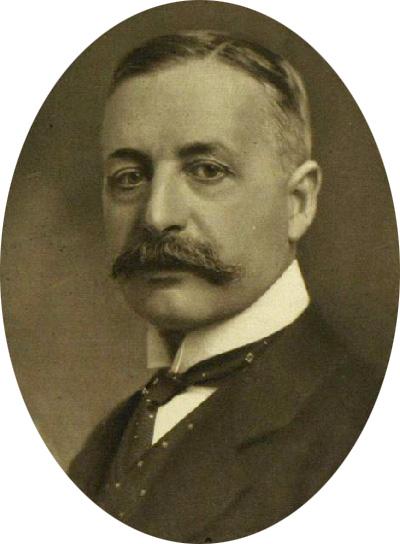
First, here is a portrait of Sir Walter G. Alcock in his prime. He was reputed to be "the best that there was", at least as an organist. It was said that he never played a wrong note, and that IF he did, he was having a very bad day! I wondered if this was actually the case, and came across this recording on YouTube, of him playing the Bach Fugue in D major, BWV 532b. I don't know when the recording was made, or how old Sir Walter was at the time, but I was really quite surprised at the "number of bad days" he was having in this performance! Here is a link: https://www.youtube.com/watch? v=4coaT7uJPMw Here is the Prelude in D major: https://www.youtube.com/watch?v=YUiIXlSLwpc ) This one comes directly from the ancient vinyl, and the sound quality is not very good.
So, we're finally ready to begin looking at the lesson piece, Legend by Sir Walter. This piece comes from his "organ method" called, appropriately enough The Organ! You can download the entire book, and a number of other works, for free here: http://imslp.org/wiki/Category:Alcock,_Walter_Galpin .
If you get really into Alcock's music, I would recommend his monumental, Introduction and Passacaglia, which is one of THE greatest organ passacaglias! Need a wedding march? NOTHING can top his arrangement of Parry's Bridal March from The Birds of Aristoophanes! You can find this one here: http://imslp.org/wiki/The_Birds_(Parry,_Charles_Hubert_Hastings) .
OK, for the third time, let's look at Legend! You really should download the score, so that you can have it in hand, as the images I've uploaded are a little small. You should also print the "Divisional Piston Layout" from my previous piston article, so, you will see exactly what's coming on or going off, when I refer to the pistons by number.
Well, we can see how he's worked this out. The melody is in the Pedal, played upon the 4' Flute, and the "accompaniment" is on the soft stops of the Swell. The indications for the use of the Swell box really should be followed. In this case, they are shading only the "decorative" parts, as the tune does not have "expression".
Before you start the piece, you should draw all the stops indictated, so, for the Great, I've have the two Open Diapasons and the two flutes already on, but without the Swell to Great coupler.
So, we've made it through the first page with no changes in the registration, but this is all about to change, so, get those piston-pushing fingers ready!
At the top of page 2, at the a tempo, we need to open the Swell box, and quite "generously" at that. Learn to judge the speed that the particularly swell shutters open at. Knowing this, and more importantly, how to control their use to achieve expressive effects is essential.
When we get the 2nd system, in the 3rd measure, the right hand goes to the Great, which is UNcoupled at this time. While you're playing this passage, add Swell 4, and ALL of the 8' Pedal stops. Remember to subtract the 4' Flute.
On the 3rd system, you'll life slightly after the downbeat to the third measure. At this point, and quite quickly, you need to add the Swell to Great coupler. I find it important to set a "handy piston" with this on it. It will act like a "reversible", and while you probably do not to actually use this piston too often, when you need it, as in this case, you've got it. As soon as you've added Sw. to Gt., add Great 3. This will bring on the 4' stops and a goodly number of 16' Pedal stops IF you've got the ALL IMPORTANT GREAT & PEDAL COMBINATIONS COUPLED stop drawn! At the end of the third measure, you'll add Swell 6 (the mini Full Swell), and then in the fourth measure, you'll add Great 4, which will bring on the Great "full" through the Fifteenth (2' Super Octave). Don't allow the Swell pedal to be fully opened at this point. You'll want to keep the crescendo going, so, you'll want some "opening space" left to go!
On the 4th system, add Swell 7 or 8, depending on whether or not you want the 4' Clarion on or off. In the following measures, I'm at the Piu mosso now, you'll successively add the Great pistons 5, 6, and 7. Don't go all the way to 8, as this is FULL Great and Pedal, and we want to save that!
So, have you survived so far?!? We've finished page 2, and in a manner of 7 measures, we went from the 8' stops to the ALMOST full organ, and all without using ANY General Pistons! Let's keep going!
As we start page 3, we're already almost full out, but we'll save that for the piu rall. towards the end of the 2nd system. At this point, add Great 8, which brings on the Great 16' Trombone and 4' Clarion, as well as the Posaune 32' in the Pedal. Although Alcock doesn't indicate it, I used the Solo Tuba for the chords in the left hand. The mighty Salisbury Tuba, and all tubas, are at their best in the "tenor register", so, don't be afraid to try this! We can take a breather and leave on the full organ until we arrive at the 4th system, second measure, where it says, "reduce". As we "built it up" gradually, now we have to "come down", but much quicker!
Any sane individual would use a general or two at this point, but since we don't "have" them, we can't, so, this is what I did. I tell you in advance that "stuff" like this takes a lot of practice, and feels odd when you first do it. It even sounds "impossible" when I describe it. With all these changes, you must ALWAYS be thinking ahead. Sometimes, as in case like this you're going to push about 12-15 pistons in about 3-5 seconds time! Here's how:
As soon as you've hit the "A-flat" in the left hand, you need to QUICKLY press, EACH of the descending Great and Swell Pistons, either simultaneously or in rapid succession. You'll come from the highest piston, and come all the way down until you've arrived at Great and Swell 3. You can do this by using the right hand to press both at the same time, or by "alternating" them, preferably starting with the Great, like this: Gt 7, Sw 7, Gt 6, Sw 6, Gt 5, Sw 5, etc. If you do them "in pairs" you'll remember where you are, and are less likely to "get lost" in this maze of pistons! Is this extreme? Definitely! As I said, a general or two will solve the bulk of the issues for you. A thing to remember, which will hopefully bring confidence and comfort to you - this is NOT an exact science! Alcock writes "reduce". He doesn't go into specifics. He had a few generals, while Ripon, where I played did not, so more piston pushing would be required on a "no generals" organ. Just remember - You may not break the rhythm as you push your pistons! It must be done in time and on time!
Another thing to keep in mind: you don't have to "sequence down" every piston. You could "skip" from the full organ, all the way down to the "3's" or even "4's" and step down from there. It will still sound good, and you need to build up your stamina before "sliding down" al the way from the "8's" to the "1's"!
Before we leave page 3, lets look at the last few measures of the page. When we get to the part that says: Sw. with Oboe, we've obviously gone to the Swell manual. A word about the phrase Sw. with Oboe. The Swell Oboe is one of the MOST important stops, as it is what I call a "bridge building stop". Having the Oboe on can help us build our volume up or down, as it "hides" some of the additions or subtractions. Look at the great French works, particularly in the works of Franck. Notice just HOW often he calls for the Fonds avec Hautbois! It's the same idea in the English organ, but the ideal is achieved in different ways. The point of all this? Use that "Swell Oboe" well and wisely. You'll be amazed at the number of things in will help with.
So, finally, we've arrived at page 4 - the last page! There isn't too much to do here with the registration (thankfully), but remember that you've got to get everything off in the Pedal and add the 4' Flute before the last measure of the first system. We've reduced again to soft 8' foundations on the Swell. DON'T use the Swell strings! For one thing, we'll save 'em for the end. For another, it's really "not English" to over use them. When I first played at Ripon, one of the lay clerks (the men of the choir) said, "Well, I can tell YOU'RE an American organist! You use the strings all the time..." Well, chappie, not so, but, I soon realized that I DID use them more than the "real" English organists did, and I stopped doing it. I now fully believe that it is better and SOUNDS better not to overdo the strings... ;-)
As we come to the end of the piece, at the rall. I take off the Swell Open Diapason, and for the last chord, I do add the Vox Angelica (Swell 1), just like a dutiful American, and the 32' Open Wood for the last note. Would Alcock have done this? Probably not, but, this is the way that I did it in this performance.
Reading through this probably sounds very confusing and overly detailed, and it probably is on both counts! However, it's very difficult to describe how to do this without all these words and "frightening" explanations! The ONLY way to learn to do this, it to DO IT! You don't have start by pushing 800 pistons per line, but only a few. To do that artistically will be difficult enough to achieve, if you've never done it before!
When I play a piece like this, I generally just do it as I go, without working out every detail. I found it VERY hard to work it all out, correct it, correct it again and again, and then describe what I'm doing! By the time I finally sat down to write all this I said, "I can't recall anything that I did!!!"
It all comes down to confidence and comfort - and that will only come with time and with practice. Make it fun and not a task. If it's not fun, it's probably not something you're going to stick with, so, be creative and daring!
I hope that this article is informative and interesting. The purpose of it is to inspire, but most of all, to be HELPFUL. I'm thinking about doing more "registration articles" dealing with hymns, other types of pieces, perhaps even some accompaniments. Would this be helpful? Please tell me! I will try to do whatever is requested or needing, and I promise NOT to make everything "Anglican" oriented!
In summation, here are the three main objectives in "piston pushing:
1) To allow you to make changes, large or small, while playing.
2) To be able to make these changes in a "rhythmic manner", not just "random" changes.
3) To add color and increase artistic integrity to music that demands such changes and on organs where such changes are possible.
Your feedback is needed and welcomed! Please subscribe to this blog if you want to know when more of these types of articles come out.
Peace,
David
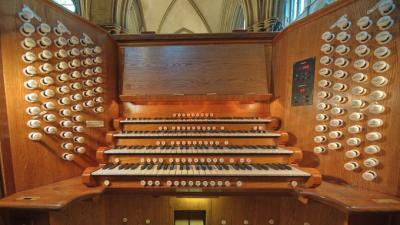
Salisbury Cathedral Willis Organ, 1877
Comments
I noticed that The Hill organ had an update with this "Gt & Ped. Comb Coupled" option. Recommended by you. :)
I'm looking forward to your review of the Hill organ. I have to look further for adding couplers to pistons.
Best wishes, Jaap
YES, there are divisionals for the Pedal as well. You set these to "match levels" with the Great Pistons, so, when you have Gt & Pedal Combs on, they will activate together when you push a great or pedal piston.
Usually the pedal "pistons" will be toe studs. I can't recall exactly where they are on Salisbury.
The computer screen for it is NOT an actual console, unfortunately.
I should have the Hill review done by the end of the week.
It's a good organ, but it's not Salisbury. The acoustics hurt it a bit.
Peace,
David
I would like to complete my selfmade console with pistons, but what is a usable layout for a 4-manual organ?
I only have 4 manuals screwed to a table.
Couplers and stops are on the computer screen. Couplers set on pistons, as do stops.
In playing English music, you should ALWAYS have Gt. & Ped. Combinations Coupled ON, as I indicate in the article! :-)
Peace,
David
I know it is... :-(
It was done in error during the time of server transition... ;-)
Maybe I can correct it!
Glad you liked the article!
With best regards,
David
THANKS for reminding me!
This article proves it again.
Please keep them coming. Judging by the reactions to the first one, a lot of the concert hall members are VERY interested!
Thanks again, David, for this fine insight.
You're very welcome! Actually, I just make it all up... ;-)
Honestly, I'm in awe of your skills. I feel like I would need 3 hands to do all that
Well, DON'T BE! You just have to work at it, and once you get the idea, it get's easier and easier to work things like this out.
I find the hardest thing is to get through a piece that has MANY changes without at least a few minor flubs!
This one, the Alcock, has a few... ;-)
THANKS AGAIN for your kindness, Hyero! If you have any specific questions or idea, please don not hesitate to ask!
David
Thanks again
Yes, it can be a lot to work out really detailed registrations, and then "pushing" all the right buttons on a LONG piece, can be stressful... :-)
